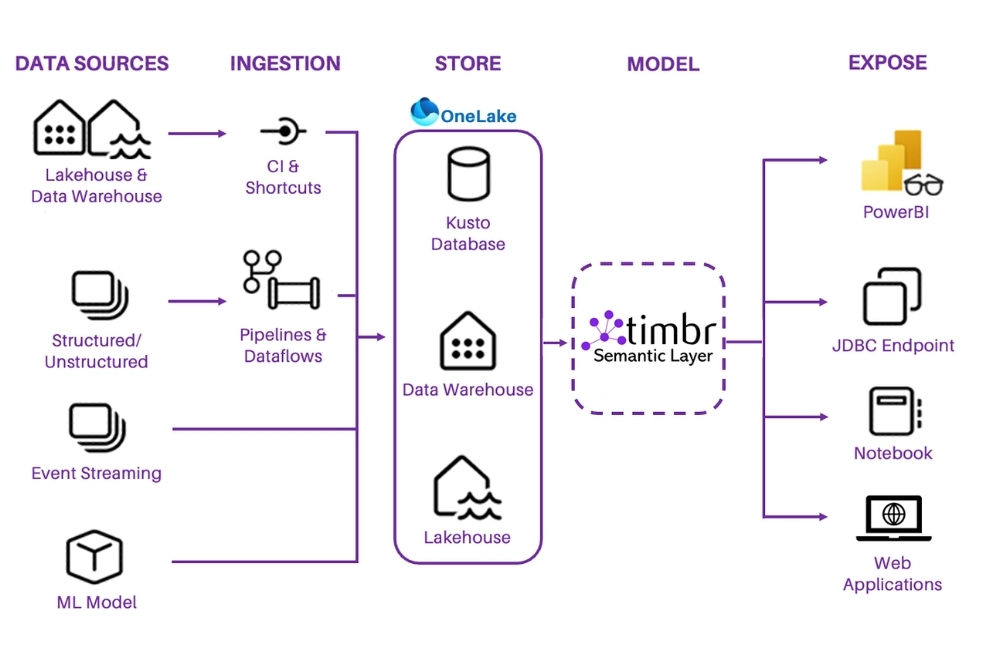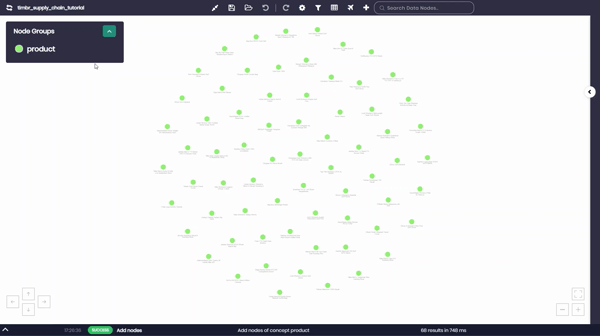data platforms
Transforming OneLake into a Semantic Powerhouse
Timbr enhances Microsoft OneLake with a semantic layer that organizes data into a governed knowledge graph, unifying concepts, relationships, and metrics to simplify consumption, enable collaboration, and unlock AI and self-service analytics.
Virtual Schema for OneLake
Model and query OneLake data as if it were a structured database, zero movement or transformation required.
Enable Self-Service Access
Empower business users with governed, intuitive access to OneLake data through business-aligned concepts.
Unify Structured and Semi-Structured Data
Model across Delta, Parquet, and JSON with a consistent, reusable semantic layer.
Accelerate Time to Insight
Shorten the path from raw files to insights by modeling directly over lakehouse data.
How Timbr Embeds into OneLake
Timbr integrates into OneLake’s modeling layer, enhancing its architecture:
- Unified Semantic Graph: Timbr creates a connected semantic graph across OneLake’s data warehouse, Kusto databases, and lakehouse storage, enabling seamless exploration of relationships.
- Semantic Relationships: Replace complex SQL JOINs with intuitive relationships, simplifying querying and exploration across datasets.
- Cross-Platform Accessibility: Timbr exposes semantic models and metrics to downstream tools like Power BI, notebooks, and web applications for consistent analytics.
Features in Action
- Ontology Modeling: Define and manage relationships within OneLake’s storage ecosystem to create a unified and reusable semantic structure.
- Metrics Autodiscovery: Discover and standardize key business metrics from existing data patterns, enabling consistent analysis across all tools.
- Seamless Tool Integration: Expose Timbr’s semantic models to popular tools through JDBC endpoints or native integrations.
Impact
By embedding Timbr into OneLake, enterprises can:
- Accelerate Data Insights: Access unified, meaningful data insights faster using semantic relationships and intuitive querying.
- Enhance Collaboration: Provide teams with a consistent semantic understanding of data, improving cross-functional alignment.
- Simplify Complexity: Eliminate redundant data modeling efforts with a centralized semantic graph that scales with organizational needs.

